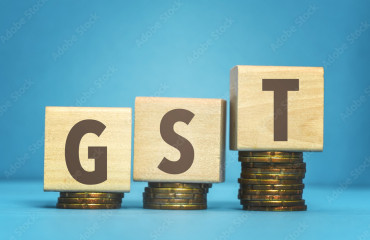
India’s economy has come a long way since Independence. This has been possible due to some path-breaking economic decisions taken along the way. As India celebrates its 78th Independence Day, Mint looks at some of those decisions that fuelled the country’s economic growth and made its economy the fifth largest in the world.
India's economy has come a long way since Independence. This has been possible due to some path-breaking economic decisions taken along the way. As India celebrates its 78th Independence Day, Mint looks at some of those decisions that fuelled the country's economic growth and made its economy the fifth largest in the world.
Five-year plans—1951
Post-Independence, India adopted a planned model of economic development through its five-year plans which were formulated and executed by the Planning Commission. These plans increased economic growth, expanded the infrastructure, boosted exports, reduced import dependency, increased life expectancy and literacy rates and ensured self-sufficiency in food grains. Panned, among other things, for failing to end poverty, the Narendra Modi-led BJP government discontinued five-year plans and in 2015, dissolved the Planning Commission.
PSU-led industrialization—1956
At independence, India was primarily an agrarian economy with a very weak industrial base. The few industries that were present were not in a position to contribute to economic growth. The Industrial Policy Resolution of 1956 laid the foundation for public sector units (PSUs) to lead India's industrialization. PSUs made India self-sufficient in iron & steel, cement, power generation, petroleum refining and fertilizer production. Most PSUs were set up in backward areas of the country. Today, India's industrial base has grown tremendously with the private sector taking the lead.
Read more: Chips, Indic LLMs, flying taxis: Inside India's tryst with tech independence
Green Revolution—1968
In the 1960s India faced multiple famines. India's agriculture, which suffered from poor productivity and was susceptible to droughts and pests, was not in a position to meet surging demand for food. That is when India embarked on what is called a Green Revolution to increase agricultural output and attain food security. Led by agricultural scientist M.S. Swaminathan, the government came up with a strategy that included new high-yield and pest-resistant seeds, improved fertilizer and pesticides, timely availability of farm credit and adoption of better agricultural practices. The results were quick. India's food grain output rose sharply and today, India is an exporter of agricultural produce.
Economic liberalization—1991
India needed a crisis to open up its economy. It came in 1991. In the decade of 1980s, India's growth was fuelled by fiscal expansion. Fiscal deficit was high and so was government spending, especially in subsidies. The 1990 Gulf War worsened the situation as oil prices spiked and remittances from the Gulf—the main source of forex—dried up. Suddenly India was staring at a forex reserves that could barely cover two weeks imports. The government led by P. V. Narasimha Rao with noted economist Manmohan Singh as finance minister, used this crisis to embrace reforms and liberalize India's economy. Licence Raj was abolished, foreign investments were allowed, the rupee was devalued and duties were slashed. This was followed by financial sector reforms, laying the foundation for India's economic growth and emergence as a large global economy.
Digitization of Indian economy—2009
It all began with the Aadhaar programme launched in 2009. The idea was to issue a 12-digit unique identity number to every citizen based on their biometric and demographic data. This mammoth exercise coincided with the drive to ensure every person has a bank account. The government then began exploring direct benefits transfers—sending subsidies and other welfare payments directly to beneficiaries' bank account using Aadhaar as proof. This was followed by the drive to push digital payments through National Payments Corporation of India. What started as a trickle is a flood today.
Read more: The long arc of India's journey: We still have miles to go before we sleep
Inflation targeting—2015
While the Reserve Bank of India always had the responsibility of managing inflation, its mandate was never clearly spelt out. That changed in 2015, when the government and the RBI signed a Monetary Policy Framework Agreement which clearly laid out RBI's role. It stated that "the primary objective of monetary policy is to maintain price stability while keeping in mind the objective of growth". It also set the inflation target at 4% with a tolerance band of plus or minus 2%. A Monetary Policy Committee (MPC) was set up in 2016 to fix the benchmark interest rates.
Good and services tax (GST)—2017
The GST, in the making for 17 years, is considered to be India's biggest indirect tax reform. India's indirect tax system was complex and costly, with a multitude of taxes—excise duty, service tax, value-added tax, central sales tax, state sales tax and more. The idea of India as a single market was there but getting all the states on board and getting them to give up their right to levy taxes was seen as insurmountable. A mechanism was set up to compensate states for any loss of revenue, convincing them to come on board. GST was finally rolled out on 1 July 2017. Seven years on, the tax has stabilized and experts say that the time is now ripe to make the tax simpler.
